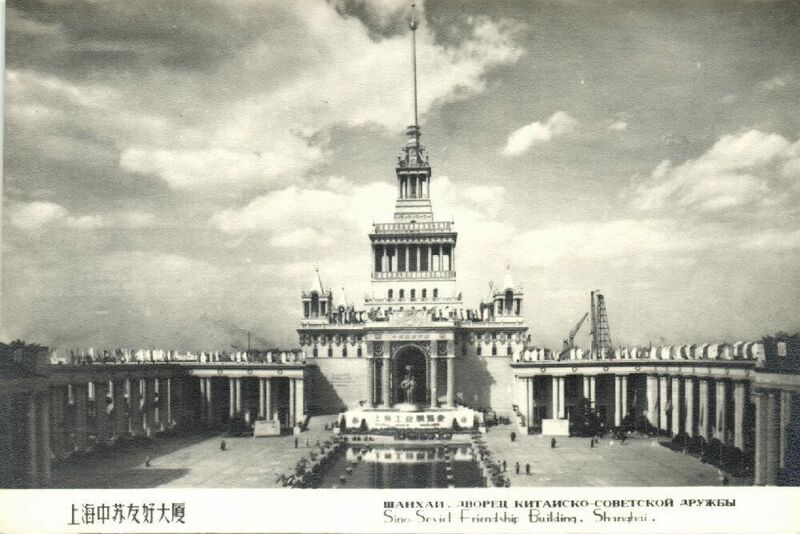Soviet Planning Theory 1949-1958
In the early years of Communist rule over China, the Chinese Communist Party collaborated a great deal with the Soviet Union, which was eager to create a strong ally against its looming capitalist adversaries in the West. During this period the USSR shared expertise and knowledge with the new Chinese central government. Consequently, China pursued a Soviet approach to economic development, which centered on large cities and industrial production.
The influence of Soviet Planning Theory was especially apparent in cities like Shanghai. With Soviet help, the CCP constructed rings of concrete block apartments around the former International Settlement to house Shanghai's rapidly expanding population of workers. Other priorities included the repair and reconstruction of infrastructure and utilities destroyed during the war- an issue that had been largely neglected by the previous regime. During this period the CCP tended to concern itself with multiple smaller-scale urban projects, contrasting with the monumental plans of the Kuomintang government. Nevertheless, Zhao Zukang, the former head of the Shanghai City Planning Board, was made the head of the Planning and Construction Bureau of the People's Government of Shanghai in 1954, indicating a certain degree of continuity with previous periods of planning. Sino-Soviet collaboration ended in 1958, however, when China's relationship with the Soviet Union soured.

The Sino-Soviet Friendship Building
This postcard depicts the Sino-Soviet Friendship Building, which was constructed in 1955. Its name was later changed to the Shanghai Exhibition Center following the Sino-Soviet split, making it a fitting metaphor for relations between China and the Soviet Union during this period.

Soviet Style Apartments
These Soviet-influenced apartment buildings in Shenzhen are similar to those that were built in Shanghai in the 1950s. Such apartment buildings were monolithic constructions meant to provide dense and efficient housing to the millions of industrial workers flooding into Shanghai to work in the city's many factories.